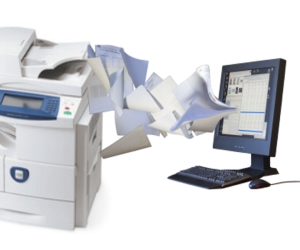
 Canadian brokers could have key critical documents – including their clients’ policy declaration pages – electronically delivered to them by their carriers in as early as six months.
Canadian brokers could have key critical documents – including their clients’ policy declaration pages – electronically delivered to them by their carriers in as early as six months.
Insurers representing 85% of the share of Canada’s property and casualty insurance market are already piloting a project called ‘E-docs,’ in which carriers can send electronic documents to their brokers, said Rick Orr of Orr Insurance Brokers. Promoting the E-docs electronic standards was a key priority for Orr during his tenure last year as president of the Insurance Brokers Association of Ontario (IBAO). Carriers have told the IBAO that they would like to see E-docs fully rolled out in 2013.
Most recently, Applied Systems announced that it has certified eight Canadian insurance carriers for the Centre for Study of Insurance Operations (CSIO) eDoc XML standard for the transmission of electronic documents between insurance carriers and brokerages. They are: The Dominion, Germania Mutual, Gore Mutual, Intact Insurance, Kent & Essex Mutual Insurance Company, Peace Hills General Insurance, Wawanesa Mutual Insurance Company, and SGI Canada Insurance Services (and its affiliates, Coachman Insurance Company and Insurance Company of Prince Edward Island).
Currently, brokers receive paper documents from their insurers, which brokers scan and attached to their clients’ electronic data files in the broker’s computer systems, referred to as Broker Management Systems (BMS). These paper files include the policyholders’ declaration – or ‘dec’ – pages, summarizing the client’s policy information and coverage. Other documents include claims opening and closing notices, as well as claims and underwriting notes.
With E-docs, all of these paper documents can be sent directly from the carrier to the broker electronically, and attach to the client’s electronic file in the BMS.
No more scanning of paper documents for upload into the BMS.
“The huge savings and paper elimination happens because of the electronic delivery of the dec pages, but the efficiencies are also in all of the other things that they can download and attach,” Orr said. “This is a huge step towards that paperless office.”
And what must brokers do to make E-docs operational within their operations?
Surprisingly, not very much.
First, brokers will need to switch to the latest version of their BMS. For some, this may be the most challenging part of the preparation for E-docs.
Second, brokers will need to buy a second computer screen for each desk, and a video card must be installed in each.
“The biggest change is that brokers will need to have two screens for their desktop,” said Orr. “Today you are working with a [paper] copy of the policy laying on your desk, and your BMS on the screen on your desk. In six months, you are going to have a copy of the dec page on the screen on your left, and you’re going to have the BMS on the screen on your right.”
If brokers are not prepared to implement E-docs, then at least two things might happen:
• First, the broker office may not be prepared for the carrier to shut off paper delivery to brokers. Assuming the E-docs project takes off, as expected, “the challenge for brokers will eventually be that carriers will shut off the paper to brokers,” Orr said. “They will have to figure out how to work without getting paper copies of the dec page.”
• Second, if brokers don’t get on board with the E-docs project – which promises millions of dollars of savings for insurance carriers – will those same carriers be willing to undertake more ambitious technology projects down the line that could save brokers even more time and money? One obvious example is the Insurance Brokers Association of Canada (IBAC’s) data exchange project, which seeks to find a way for brokers to deal with multiple insurance carriers without using individual company portals.
“Brokers have to adopt the solutions that we are driving the insurers to build, so that they will build the next great thing,” Orr said. “And the next big thing is the data exchange project. If brokers can show carriers that we’ll adopt E-docs, and save them money, then we can convince them to build data exchange, which would eliminate all of the duplicate and double entry on the broker side, which would save us a fortune.”
